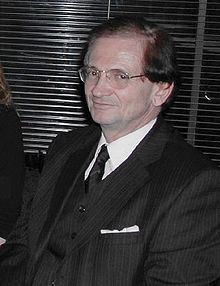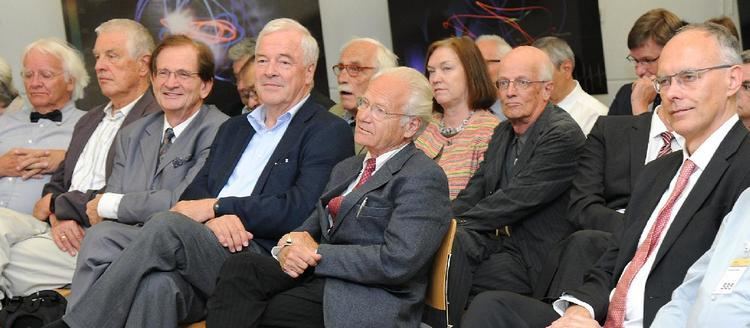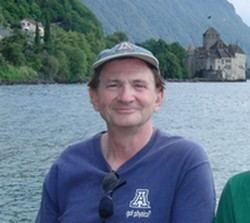Residence US Nationality US, German Fields Physicist | Name Johann Rafelski | |
 | ||
Alma mater Johann Wolfgang Goethe University Frankfurt am Main Known for Structure of the Vacuum State and Energy in Strong External Field Quantum Electrodynamics and Quantum Chromodynamics; Muon-catalyzed fusion; Hadronization and Hagedorn temperature;Deconfinement of quarks (QGP) in relativistic heavy ion collisions;Strangeness as signature of quark-gluon plasma Education Goethe University of Frankfurt Books Hadrons and Quark-Gluon Plasma. Cambridge Monographs on Particle Physics, Nuclear Physics and Cosmology | ||
Johann Rafelski (born 19 May 1950) is a German-American theoretical physicist. He is Professor of Physics at The University of Arizona in Tucson, guest scientist at CERN (Geneva), and has been LMU-Excellent Guest Professor at the Ludwig Maximilian University of Munich in Munich, Germany.
Contents

Rafelski’s current research interests center around investigation of the vacuum structure of QCD and QED in the presence of strong fields; study of the QCD vacuum structure and deconfinement with strange particle production in deconfined quark–gluon plasma formed in relativistic heavy ion collisions; the formation of matter out of quark-gluon plasma in the hadronization process, also in the early Universe; the ascent of ultrashort laser light pulses as a new tool in this domain of physics. He has also contributed to the physics of table top Muon-catalyzed fusion, antimatter formation and annihilation, and artificial intelligence.

Career
Rafelski studied physics at Johann Wolfgang Goethe University in Frankfurt, Germany, where he received his Ph.D. in the spring of 1973 working with Walter Greiner on strong fields, QED vacuum and positron production. In 1973 he began a series of postdoctoral fellowships: first at the University of Pennsylvania (Philadelphia) with Abraham Klein, then at the Argonne National Laboratory near Chicago where he worked with John W. Clark of Washington University in St. Louis and Michael Danos of National Bureau of Standards (now National Institute of Standards and Technology). In spring 1977 Rafelski moved for a few months to work at the GSI Helmholtz Centre for Heavy Ion Research in Germany, then continued on to a fellowship at CERN, where he worked with Rolf Hagedorn and John S. Bell; Rafelski remains associated with CERN to this day. In the fall of 1979 Rafelski was appointed tenured associate professor at Johann Wolfgang Goethe University where he taught for 4 years, while collaborating closely with Hagedorn and with Berndt Muller (today Duke University) and one of his first students, Gerhard Soff (Dresden University of Technology, deceased). Rafelski then accepted the chair of Theoretical Physics at the University of Cape Town (South Africa) where he created a Theoretical Physics and Astrophysics Institute before moving to The University of Arizona in the fall of 1987. During these years he was also a guest scientist at NIST in Washington, D.C. His interests in Muon-catalyzed fusion and other table-top fusion methods led him to a collaboration led by Steven E. Jones working at the Los Alamos National Laboratory. The start-up of experimental work on Quark-Gluon Plasma has led to another enduring collaboration with the University of Paris 7-Jussieu involving Jean Letessier.
During the past 30 years Rafelski's primary research objective has been the understanding of the vacuum, the Lorentz Invariant Aether. He contributed to the development of the heavy ion research program to study the deconfinement of quarks and gluons in hot QCD as result of change in vacuum structure.
Biography
Rafelski was born in Krakow, Poland, on May 19, 1950. In 1973 Rafelski married Helga Betz; their union produced two children. Dr. Helga Rafelski died of cancer in 2000. In 2003 Rafelski married Victoria Grossack.
